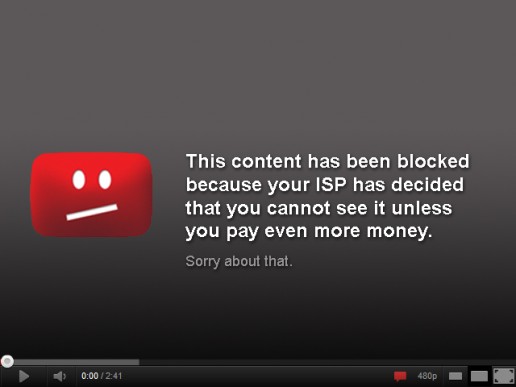This past Thursday, December 14 may have been the first time that some of you reading this blog heard the phrase “net neutrality.” Even now, you may still be wondering what the fuss is about.
At the same time, maybe you’re scared to admit you don’t know what net neutrality is and don’t want to look ill-informed about the topic. While we have discussed the net neutrality issue in the past, perhaps you missed those previous posts and are now completely in the dark.
Well, never fear! Your friendly neighborhood web developers at Networtech are here to fill you in on the latest net neutrality news so you can expand your knowledge about this important internet issue.

First, a brief history lesson.
Back in February 2015, the Federal Communications Commission (FCC) enacted the Open Internet Order in favor of strict net neutrality rules that regulated the flow of online traffic. In a nutshell, net neutrality is the principle that internet service providers (ISPs) mustn’t show preference for or discriminate against certain websites or online content. Net neutrality democratizes the internet by providing web content developers, regardless of company size, the opportunity to be seen.
The Open Internet Order also reclassified broadband internet service as a “common carrier,” a designation which applies to public utilities like landline phones and electricity. Under Title II of the Communications Act, ISPs were prohibited from blocking or throttling data, or from creating so-called “fast lines” for select content providers.
So where do we stand today?
The vote held last week by the FCC repeals the net neutrality and Title II protections established in 2015. FCC critics fear that a reversal of strong net neutrality will enable ISPs like AT&T, Comcast and Verizon to slow down or block content or applications as it sees fit. Without Title II, ISPs can make the conscious decision to prioritize prominent content providers who can pay to have their websites load faster than the competition. In addition, the lack of strong net neutrality and Title II regulations could have a chilling effect on free speech by making it more difficult to locate “controversial” content.
Net neutrality - Wikipedia
Net neutrality is the principle that Internet service providers and governments regulating the Internet should treat all data on the Internet the same, not discriminating or charging differentially by user, content, website, platform, application, type of attached equipment, or mode of communication.
What can we do to restore net neutrality?
Fortunately for net neutrality defenders, not all is lost. Shortly after this past week’s FCC vote, Senate Minority Leader Chuck Schumer said that he would force a vote to restore the previous net neutrality rules. Despite the fact that Schumer’s party, the Democrats, doesn’t have a majority in Congress, they will invoke the Congressional Review Act (CRA) to repeal the FCC vote even without the support of Republican Majority Leader Mitch McConnell. However, because the Republicans currently own a slim 51-49 Senate majority in Congress, the odds are in favor of the GOP voting along party lines to uphold the FCC decision.
If you support strong net neutrality, you can urge your elected officials to use the CRA to pass a “resolution of disapproval” that undoes the recent FCC decision. To find out the contact information of your local Congressmen and Representatives, visit the Who Represents Me? website.